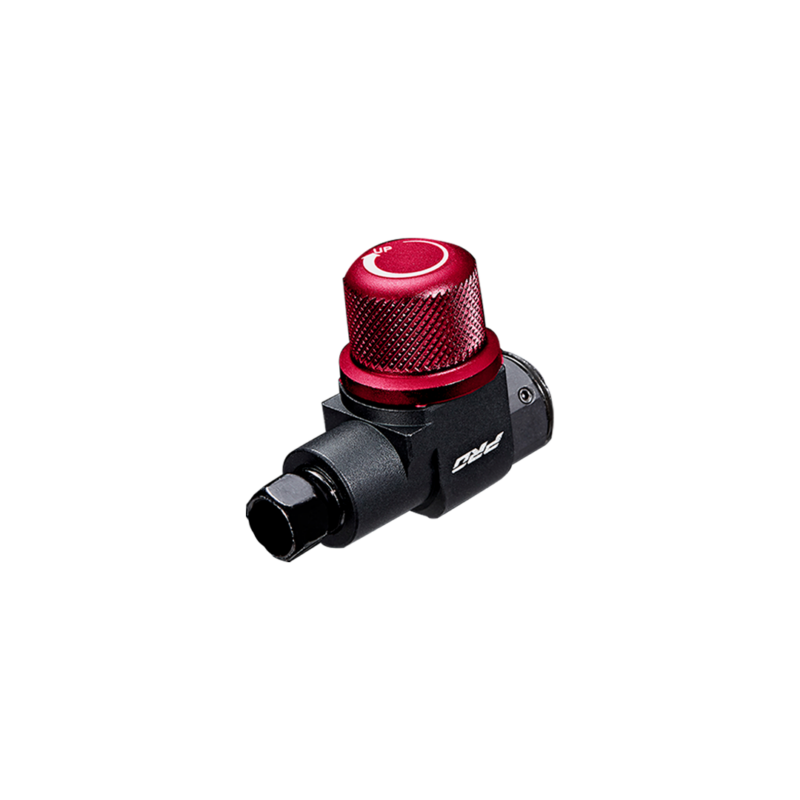TIPS
Discover the different TYPES of BIKE BRAKES and their advantatges
Bike brakes are the most important safety element for a cyclist. That’s why it’s important for you to know what are the different types of bicycle brakes that exist. We’ll explain you everything you need to know about the different types of brakes that exist: rim brakes, disc brakes, hydraulic brakes, caliper brakes… Don’t worry, this is not a technical mechanics master class. We’ll answer all the questions that you really want to know: What types of bike brakes are there? What are their advantages? And, most important, what’s the best bike brake type for you.
Find out what are the different types of bike brakes and what’s the best brake for your bike. We’ll give you tips and advice to help you on choosing between rim brakes, mechanical disc brakes or hydraulic disc brakes. Let’s go!
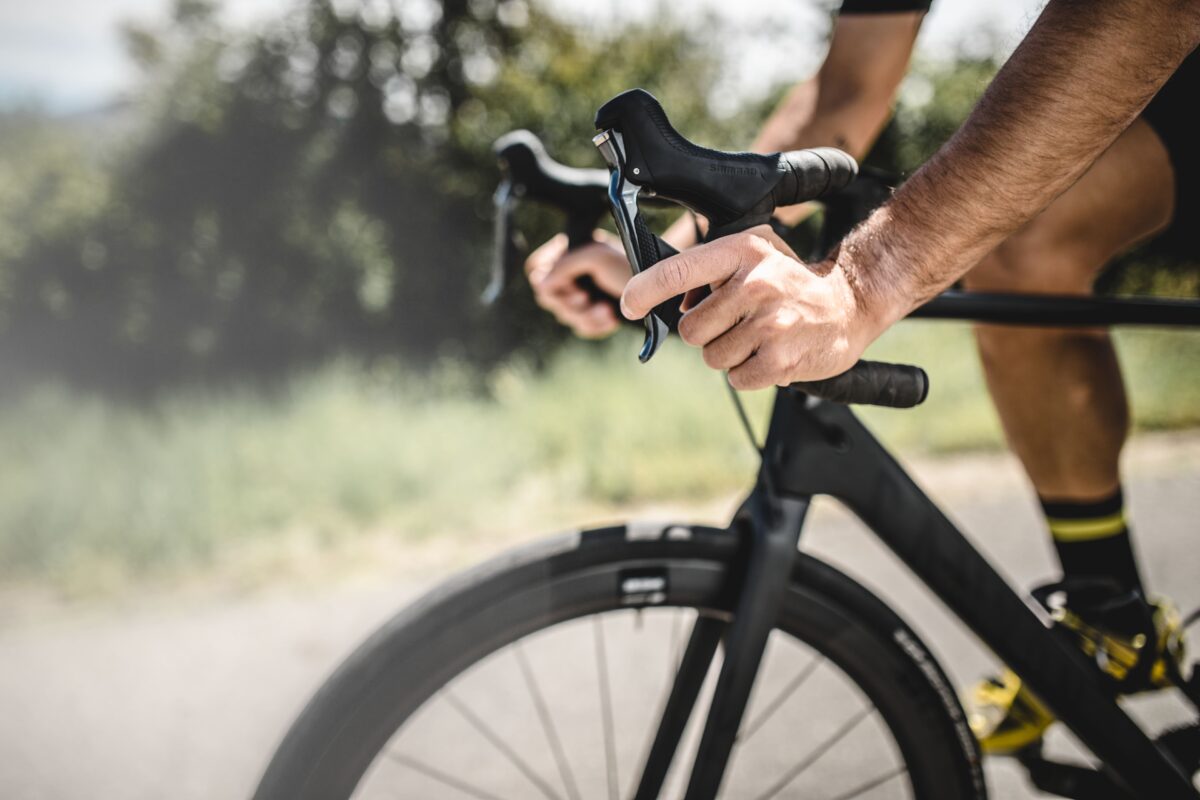
- Two main types of bike brakes: disc and rim brakes
- Disc brakes
- Hydraulic disc brakes
- Mechanical disc brakes
- Rim brakes
- Comparative table: main types of bike brakes
- Other types of bike brakes
- What type of bike brake should I choose?
The two main types of bike brakes: disc and rim brakes
In cycling, there are two main types of bike brakes: disc brakes and rim brakes.Shoe brakes or rim brakes are the traditional brakes and they act on the rim to slow down the bike. Disc brakes are a newer type of brake that has gained popularity for their power, and they act on a disc rather than the rim. Choosing one or the other depends on your style, the conditions of the terrain you ride on and, of course, your budget… Do you want to know which one is the best braker for you? We’ll tell you!
Disc brakes
Disc brakes are the best type of bike brake in terms of performance, power and reliability. They are the newest system and much more powerful than rim brakes. They work by generating friction by squeezing the brake pads against a disc mounted in the center of the wheel, not directly against the rim.
A disc brake is the ideal type of brake if you’re looking for maximum braking performance and control. But what’s the difference between mechanical disc brakes and hydraulic disc brakes? When to choose one or the other? We compare them!
Hydraulic disc brakes
Hydraulic disc brakes are the best type of bicycle brake in terms of braking power, control and precision because they use a hydraulic fluid to actuate the brake pads. Maximum performance, but also at a higher price. Although they are already the most powerful type of bike brake, you can improve braking power and feel with a brake booster, such as the OutBraker Booster for MTB and road, and reduce brake pad wear and maintenance while improving braking quality.
ADVANTATGES
- Power and precision: maximum braking power and precision.
- Reliability: more reliable and safer, in all weather conditions.
- Modulation and control: allows better control of braking force.
- Less maintenance: and also less wear and tear
DISADVANTATGES:
- Price: higher price and maintenance costs.
- Complicated maintenance: although less frequent, it is more complex than mechanical discs, and requires specialized technicians.
- Weight: they are a slightly heavier option due to their hydraulic system.
OUR RECOMMENDATION: Maximum power and performance for challenging stryles and competitive levels.
- Great descents on road and mountain with long and prolonged braking.
- Modalities of MTB as enduro, downhill or Cross Country (XC), for control and safety in technical terrain and high speed.
- For Gravel, Cyclocross and other disciplines with changes of pace over uneven and demanding terrain requiring constant braking.
- Any demanding style and road that requires constant and aggressive braking.
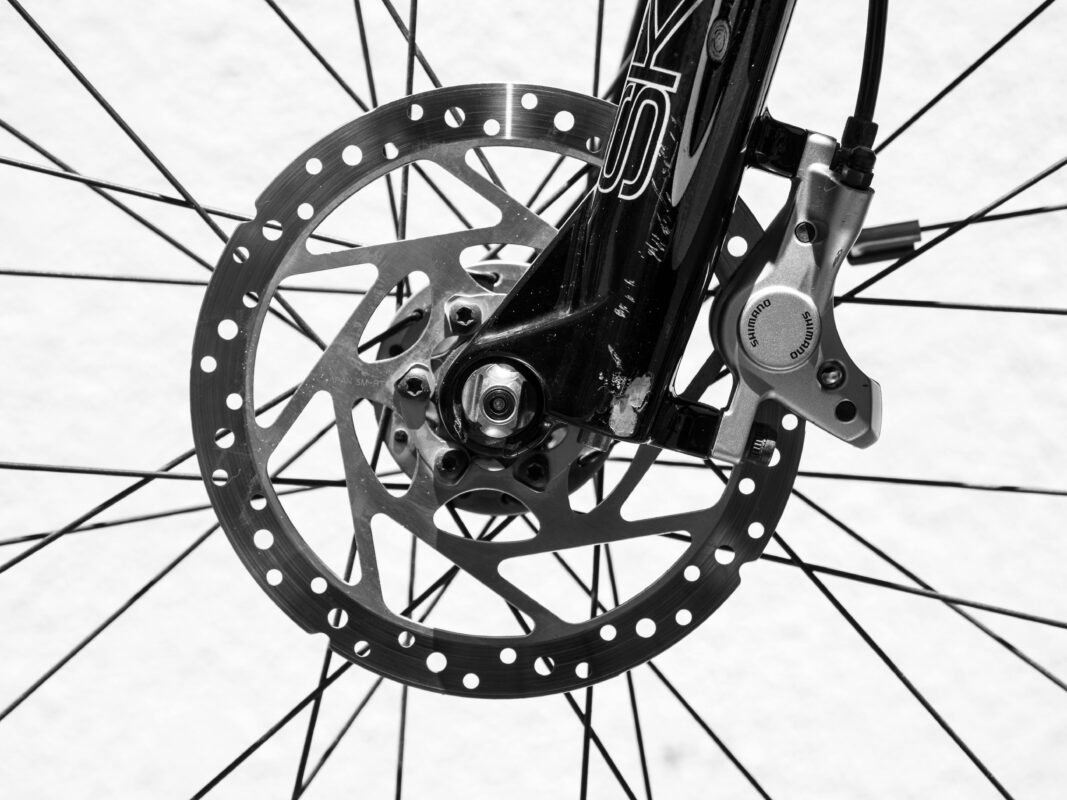
Mechanical disc brakes
Mechanical disc brakes are less powerful than hydraulics because they use a cable instead a hydraulyc fluid to actuate the pads, but they offer greater precision and performance than rim brakes. They are less expensive than hydraulics but sacrifice some braking quality. They need more maintenance attention, but are simpler and cheaper tasks.
Advantages:
- More economical: both initial cost and cost of repairs and maintenance.
- Maintenance: More but simpler tasks, no need for specialist mechanics.
- Lightweight: Lighter than hydraulic brakes.
Disadvantages:
- Less power and precision: especially in demanding terrain and conditions: gravel, wet, mud.
- Safety: it has more mechanical complexity and more exposed components, which implies more failure points.
- Wear and tear and deterioration: the visible system exposed to dust, dirt and corrosion gets deteriored more easily. It leads to more (but easier) maintance tasks.
Recommendations: Balanced alternative: more economical, easy maintenance and good braking power.
- Perfect for casual use or undemanding terrain.
- For MTB and Gravel for begginers or recreational rides that don’t need maximum braking power.
- It’s a great brake type for road bikes, as they lighten weight and road routes don’t require constant braking.
Rim brakes
Rim brakes are a less powerful but lighter, cheaper and less maintenance-intensive type of brake. They generate direct friction on the rim of the bike through two brake pads located on the sides of the rim. They are usually sufficient for casual use or flat terrain. Caliper brakes are the most common rim brakes.
Advantages:
- Cost: they are significantly cheaper than disc brakes.
- Maintenance: simpler and low cost tasks, it’s even possible to do it at home
- Lightweight: reduces the overall weight of the bike
- More common: despite the rise of disc brakes, they are still very common, making it easier to find compatible parts and components.
Disadvantages:
- Less power and modulation: less efficient and lower quality braking.
- Tire wear: direct friction with the tire wears down the braking surface and requires more frequent tire replacements
- Overheating: they heat up due to friction and reduce their efficiency, which increases the risk on long or steep descents
- Less reliability: Less effective in adverse weather conditions: mud, snow, rain, humidity, wet.
Recommendation: Basic and economical option for casual and urban use.
- Daily use, urban and short trips with gentle slopes.
- For beginner cyclists who want to familiarize themselves with the braking dynamics of the bike.
- Road cycling on flat terrainor long climbs and without demanding braking or steep descents.
Caliper brakes
Caliper brakes are a great option for most cylclists as they provide direct and precise braking, and although less powerful than other brakes, they’re powerful enough. It’s the most common rim brakes and a type of brake widely used on road bikes. The brake pads are mounted with an easy anchorage just above the rim, on the frame or fork. It’s very easy to repair and replace any part. The brake pads are usually rubber, so they wear easily and it is important to check them regularly.
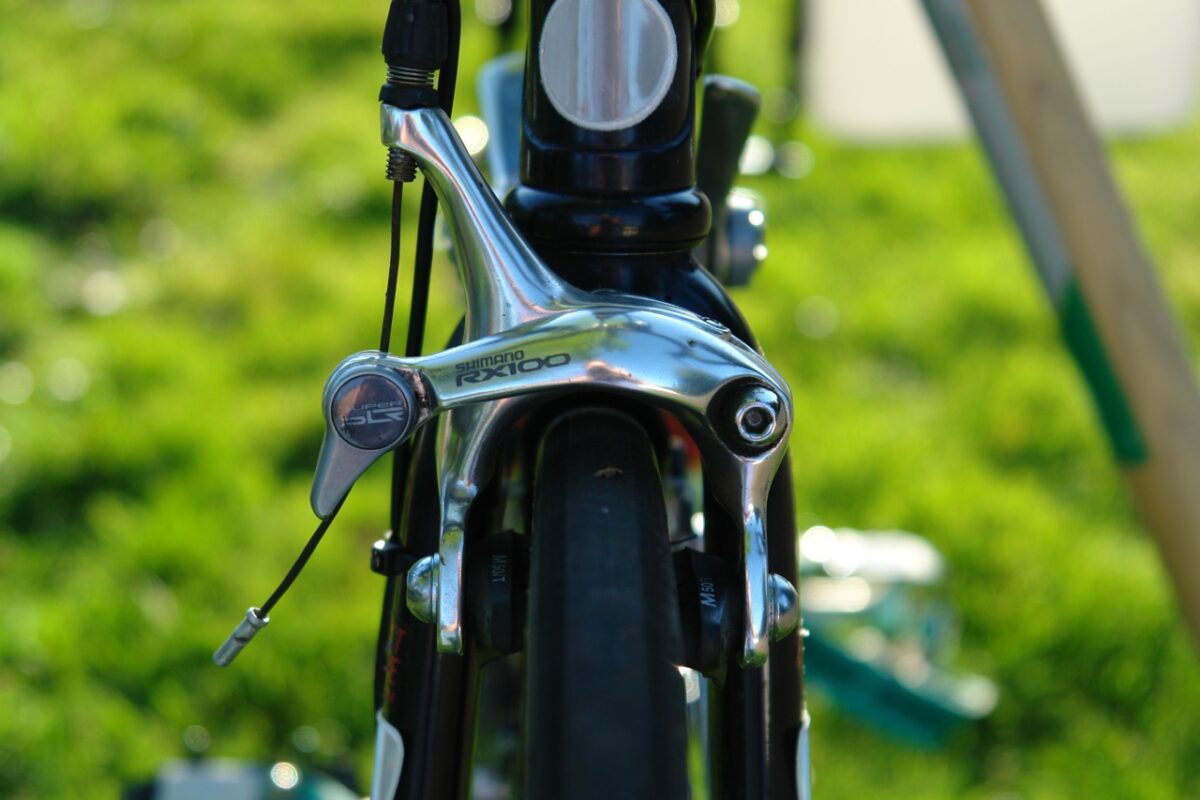
Cantilever brakes
Cantilever brakes are a type of brakes for mountain bikes and cyclocross bikes that were very popular, as the greater distance between the brake arms makes it easier to pass mud and allows wider tires and larger brakes to be mounted. With disc brakes, their use has plummeted, although they are still seen on cyclocross and touring cyclocross bikes because of the ease of draining the wheels as they get dirty, which makes maintenance much easier.
V-Brake bikes
They are a subcategory within cantilever brakes characterized by long arms. V-brakes are a type of bike brake common on MTB bikes, easy to install and adjust, economical, and widely used. They have more braking power than caliper brakes, simple operation and more durability than cantilever brakes. Although disc brakes are increasingly used, they are a good choice for mountain bikers and non-expert public: simple, effective and affordable for mid-low range MTB bikes.
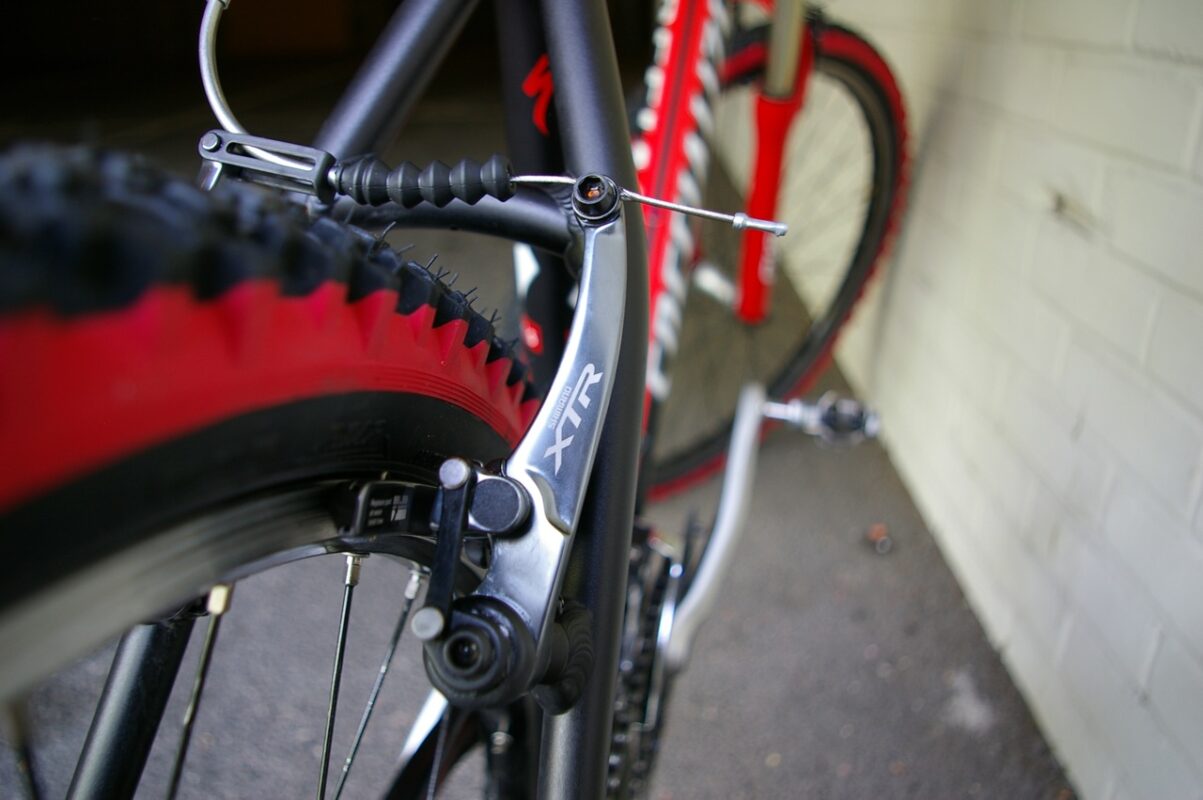
Comparative table: main types of bike brakes
In the following table we summarize and compare the different types of bicycle brakes. 5 stars for the best option for you as a cyclist on each asset.
| BRAKE TYPE | Accuracy/Power | Safety and reliability | Maintenance | Weight | Price |
| Hydraulic disc brakes | ⭐⭐⭐⭐⭐ | ⭐⭐⭐⭐⭐ | ⭐⭐⭐ | ⭐⭐⭐ | ⭐⭐ |
| Mechanical disc brakes | ⭐⭐⭐⭐ | ⭐⭐⭐⭐ | ⭐⭐⭐ | ⭐⭐⭐⭐ | ⭐⭐⭐ |
| Caliper rim brakes | ⭐⭐⭐ | ⭐⭐ | ⭐⭐⭐⭐⭐ | ⭐⭐⭐⭐⭐ | ⭐⭐⭐⭐⭐ |
| V-Brakes | ⭐⭐⭐ | ⭐⭐⭐ | ⭐⭐⭐⭐ | ⭐⭐⭐⭐⭐ | ⭐⭐⭐⭐⭐ |
Other types of brake bikes
We’ve talked about the main types of bike brakes, but there are other braking systems for you tu know.
Bicycle drum brakes
Drum brakes are a type of brake with great protection and durability, previously popular on city and cargo bikes, although they are becoming less and less seen. They were common because they are well protected against external elements and dirt, but their weight and complexity have made them almost obsolete.
Regenerative brakes for e-bikes
Regenerative brakes are a type of electric bike brake that harnesses the kinetic energy of braking to recharge the bike’s battery. When braking, the motor becomes a generator that converts the energy into electricity for the battery. It is not a braking system like the ones we have seen so far (it does not stop the bike), but it is a very interesting type of brake for electric bikes that helps to extend the life of the battery and prolong its autonomy.
Coaster brakes or pedal brakes
The coaster brake is a type of bicycle brake that is activated when the rider pedals backwards. This fixed-pedal system is quite unusual because it offers a few controledl and precise braking. However, it is the star type of brake on BMX bikes, as it has no cables or brake levers that limit turns and tricks, and on children’s bikes, because it requires no maintenance.
What type of bike brake should I choose?
Choose hydraulic or mechanical disc brakes for maximum power and performance or rim brakes for lighter weight at a more economical price. Let’s go with a final overiew:
→ Brake shoes or rim brakes on caliper: Economic and lightweight option for daily use on dry terrain. Ideal brake type for road bikes.
→ Hydraulic disc brakes: higher performance, power and control in all conditions and situations, although it is more expensive. The most reliable and safe. For demanding modes and maximum performance.
→ Mechanical disc brakes: Intermediate and balanced solution in terms of price, performance and maintenance. Often sufficient for demanding MTB or gravel modes at recreational or user level.
→ V-brakes: Cheap, simple and suitable alternative for mid-low range mountain bikes without high performance requirements.
Now you know the types of brakes that exist, but we suggest you to always consult a specialist if you need to change your bike brakes or your bike. Bike brakes are a whole world that goes far beyond: brake pads, shoes, levers, components… At OutBraker we offer complementary systems to hydraulic brakes such as ABS systems or the Outbraker booster to take hydraulic brakes to the next level so you can brake like a pro. If you want to know more about the Outbraker , do not hesitate to contact us!
